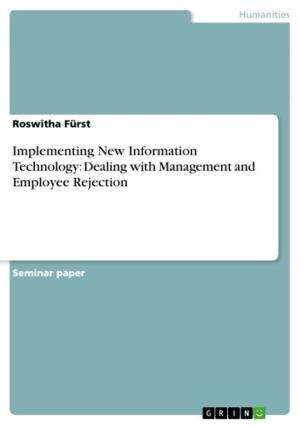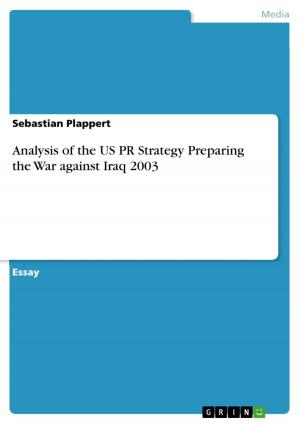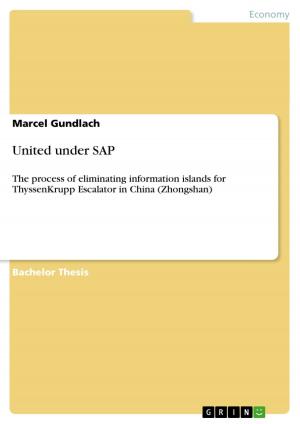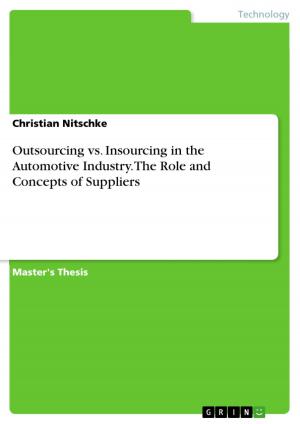Characterization of a haloarchaeal 16S rRNA gene clone library from Alpine rock salt from Bad Ischl, Austria
Nonfiction, Health & Well Being, Medical, Medical Science, Microbiology| Author: | Heidemarie Kloninger | ISBN: | 9783638283779 |
| Publisher: | GRIN Publishing | Publication: | June 17, 2004 |
| Imprint: | GRIN Publishing | Language: | English |
| Author: | Heidemarie Kloninger |
| ISBN: | 9783638283779 |
| Publisher: | GRIN Publishing |
| Publication: | June 17, 2004 |
| Imprint: | GRIN Publishing |
| Language: | English |
Diploma Thesis from the year 2002 in the subject Biology - Micro- and Molecular Biology, grade: 1,0 (A), University of Salzburg (Institute for Genetics and General Biology), language: English, abstract: Using a new method to extract total community DNA of Alpine Permo-Triassic rock salt sediment samples, which involved centrifugation instead of ultrafiltration for enrichment of cells and several washing steps for detaching cells from sediment particles, Archaeal biodiversity was re-examined . For this purpose, a 16S rRNA gene clone library was created and archaeal sequences were characterized via phylogenetic analysis of amplified ribosomal DNA restriction analysis (ARDRA) with DdeI and 16S rDNA sequencing as well as denaturing gradient gel electrophoresis analysis (DGGE). Inserts of clones representing ten ARDRA groups were analysed with partial sequence analysis and representatives of different phylogenetic groups were sequenced double stranded. This possibility of rapid characterization of a total clone library via restriction analysis facilitated the detection of low abundance phylotypes. The 16S rRNA gene library contained 11 different phylotypes, all of which belonged to the Halobacteriaceae. Fifty-three partial haloarchaeal sequences were obtained as well as twenty total insert sequences of clones. Four novel phylotypes clustered tightly with four sequence clusters found in a previous study of Archaeal biodiversity of Alpine rock salt (Radax et al. 2001). One sequence (HW 50) had 99.0% identity to Halococcus morrhuae and another (HW 23) had 97% identity to Natronomonas pharaonis. Four phylotypes were closely related to cultured Halobacteriaceae (more than 97% similarity) and to strains isolated from salt mine brines; one phylotype was 94-94.6% similar to mainly alkaliphilic halobacteria. Six phylotypes were only remotely related to cultured Halobacteriaceae (less than 89-92% similarity), suggesting that they represent uncultured novel haloarchaeal taxa in rock salt. The novelty of the sequences suggested also avoidance of haloarchaeal contaminants during preparation of DNA and PCR reactions. The data presented here also indicate that our present view of halobacterial diversity is far from being complete.
Diploma Thesis from the year 2002 in the subject Biology - Micro- and Molecular Biology, grade: 1,0 (A), University of Salzburg (Institute for Genetics and General Biology), language: English, abstract: Using a new method to extract total community DNA of Alpine Permo-Triassic rock salt sediment samples, which involved centrifugation instead of ultrafiltration for enrichment of cells and several washing steps for detaching cells from sediment particles, Archaeal biodiversity was re-examined . For this purpose, a 16S rRNA gene clone library was created and archaeal sequences were characterized via phylogenetic analysis of amplified ribosomal DNA restriction analysis (ARDRA) with DdeI and 16S rDNA sequencing as well as denaturing gradient gel electrophoresis analysis (DGGE). Inserts of clones representing ten ARDRA groups were analysed with partial sequence analysis and representatives of different phylogenetic groups were sequenced double stranded. This possibility of rapid characterization of a total clone library via restriction analysis facilitated the detection of low abundance phylotypes. The 16S rRNA gene library contained 11 different phylotypes, all of which belonged to the Halobacteriaceae. Fifty-three partial haloarchaeal sequences were obtained as well as twenty total insert sequences of clones. Four novel phylotypes clustered tightly with four sequence clusters found in a previous study of Archaeal biodiversity of Alpine rock salt (Radax et al. 2001). One sequence (HW 50) had 99.0% identity to Halococcus morrhuae and another (HW 23) had 97% identity to Natronomonas pharaonis. Four phylotypes were closely related to cultured Halobacteriaceae (more than 97% similarity) and to strains isolated from salt mine brines; one phylotype was 94-94.6% similar to mainly alkaliphilic halobacteria. Six phylotypes were only remotely related to cultured Halobacteriaceae (less than 89-92% similarity), suggesting that they represent uncultured novel haloarchaeal taxa in rock salt. The novelty of the sequences suggested also avoidance of haloarchaeal contaminants during preparation of DNA and PCR reactions. The data presented here also indicate that our present view of halobacterial diversity is far from being complete.















